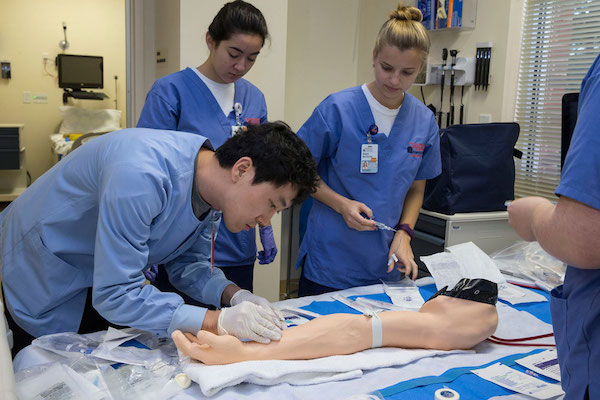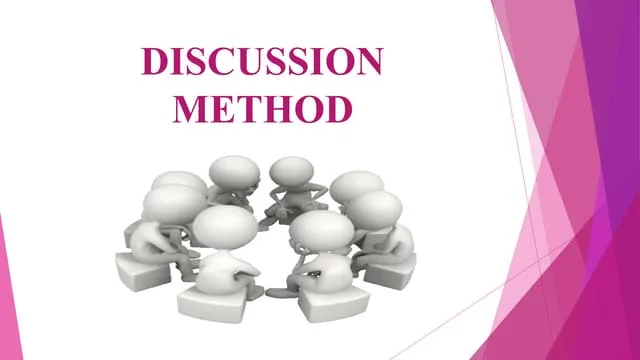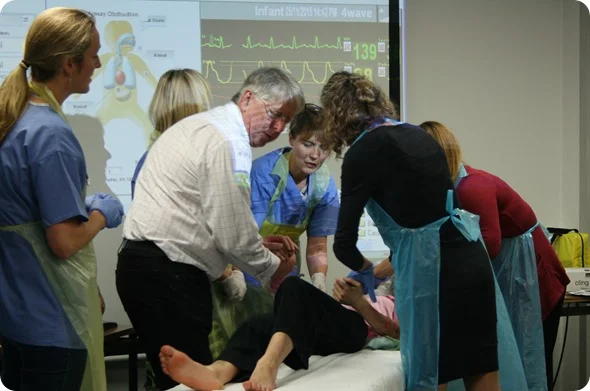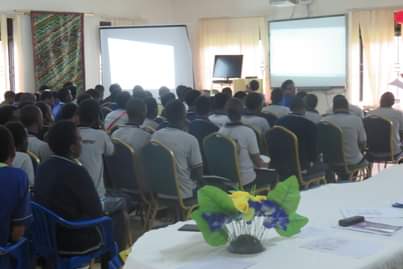Table of Contents
ToggleTEACHING METHODS
Teaching methods refer to the regular ways or orderly procedures, employed by the teacher in guiding the learners in order to accomplish the aims of the learning situation.
Teaching strategies: refers to methods used to help students learn the desired course content and be able to develop achievable goals in future.
Teaching Learning activities: Learning activities are things students do, or are supposed to do, during the lesson, e.g. reading, taking a test, listening, taking down notes, etc. Any learning activity a teacher incorporates into a lesson is part of the teacher’s strategy.
Factors to consider when selecting a teaching method to use.
Efficient teaching methods are essential tools that can help students achieve success in the classroom. There are several factors that a teacher must consider when choosing a teaching method for their students. Some determining factors for selecting a teaching method to be applied include;
Instructional objectives: Attaining instructional objectives depends on the teaching method used. For example, if the instructional objective requires students to administer an injection, the teaching method should be Demonstration.
The cognitive nature of the learners: The teaching method used depends on how quickly learners understand the content—slow learners versus fast learners. If there are more slow learners in the class, the teacher may choose a method that is easier for those students to grasp the lesson or subject matter.
The age of the learners: Every method selected should relate to the learners’ age. Adults may be more comfortable with problem-based learning than lecturing, teenagers might be more interested in experimentation and demonstration, while infants may be influenced by concept cartoons rather than experimentation.
Availability of teaching aids: Teaching aids are materials used to help learners better grasp a given concept. If a teacher lacks proper teaching aids, they may need to adapt their method to align with the available resources.
The size of the class: The number of students in the class guides the choice of the teaching method. Lecture methods are suited to large groups, while other methods like group discussions and demonstrations work well with smaller groups.
Teacher’s ability and preference: The teacher’s ability to handle a method and their experience play a role in method selection.
Student learning style: Students have different learning styles—some learn best by hearing, others by seeing, and some by touching. Therefore, different teaching methods are required to accommodate these styles.
School policies: School policies can influence the choice of teaching method. Some schools emphasize learner-oriented methods like problem-based learning, while others prefer more traditional teaching approaches.
Examination setup: Examination formats can also impact teaching methods. Teachers often align their teaching to help students prepare for the specific exams they will face.
Time constraints: Methods of teaching are bounded by time. Teachers must consider the available time for covering a topic when selecting a teaching method.
Available resources: The availability of resources can determine the final choice of teaching method. For instance, if a teacher wishes to use the demonstration method but lacks the required facilities, they may opt for video demonstrations if electrical gadgets are available.
CLASSIFICATIONS OF TEACHING METHODS
There are two major divisions of teaching methods:
Teacher-centered methods – the learner is not directly involved in teaching (passive).
Student-centered methods – the learner is directly involved in teaching (active learner).
TYPES OF TEACHING METHODS
LECTURE METHOD
A lecture is defined as the method of instruction in which the instructor has full responsibility for presenting the subject content orally.
OR
Lecture is an oral presentation by a teacher to students about a particular subject.
Usually, the lecturer will stand in front of the room and recite to the students. It involves no student participation, and the students are usually passive, and teaching aids may be used such as a projector, charts, chalk, and chalkboard, etc.
When is it applicable:
- When introducing a new topic.
- To stimulate the interests of the learners.
- To clarify some misunderstood points.
- When there are no appropriate or adequate textbooks for the learners.
- When students are mature enough, like in tertiary institutions.
Advantages of lecture method of teaching:
- Allows the instructor to precisely determine the aims, content, organization, pace, and direction of a presentation.
- It facilitates large class communication, as a single teacher can communicate with the whole class.
- It can be used to arouse interest in a subject, like the introduction of subject content.
- It also encourages great control of the class by the teacher as he or she is recognized to be an authoritative figure.
- Time-saving, as large amounts of new information are delivered at once.
- Gives the instructor the chance to expose students to unpublished or not readily available material.
- Useful method for auditory learners (those who learn by hearing).
- It is cost-effective as it enables a high student/teacher ratio to be achieved.
Disadvantages of lecture method of teaching:
- It places students in a passive rather than an active role, which hinders learning.
- It enhances one-way communication, therefore the lecturer must make a conscious effort to become aware of student problems like where to simplify hard content.
- It does not provide immediate feedback to the lecturer since there is no verbal communication with students.
- It pays little regard to individual differences of students.
- It usually provides little time for questions and does not encourage teamwork.
- It cannot teach skills to be acquired by students.
- Since it doesn’t involve student participation, their rate of learning and attention declines as the lecture proceeds.
- It does not enhance the retention of content as it leaves gaps in understanding since there is no demonstration or experimentation.
- Requires the instructor to have effective speaking skills and be audible.

INTERACTIVE LECTURE
It is also called modified lecture.
This is a method of teaching where the instructor uses oral presentation but breaks the lecture at one point to have students actively participate in an activity of teaching and learning.
Interactive lecture is different from the traditional lecture method in that it involves participants in discussion as much as possible.
When is it applicable:
Interactive lecture is applied in similar situations as the traditional lecture method but it enhances:
- Active engagement of learners and avoids one-way communications.
- Critical thinking.
- Assessment of how well students are learning.
Advantages of modified lecture method:
- It allows active engagement of learners.
- It brings flexibility in learning like a teacher can switch to previous content in an explanation.
- It improves the student attention span.
- The lecturers can inspire the audience with enthusiasm.

DEMONSTRATION METHOD
Demonstration is a means of presenting material visually and audibly to a group of learners, emphasizing the important steps of a process or task.
Students witness a real or simulated activity in which one uses materials from the real world. Return demonstration is a process by which a learner accurately portrays a procedure, technique, or operation which the teacher demonstrated. The teacher may demonstrate the different processes relevant for students in order to perform a given task effectively, i.e., skills acquisition. Thereafter, the students are also given the opportunity to practice.
When is it applicable:
- When teaching a process leading to skills acquisition.
- When materials and equipment are insufficient.
- When experimenting with dangerous chemicals or solutions.
Advantages of the demonstration method:
- It trains the students to be good listeners and observers.
- It stimulates thinking and the formation of concepts and generalization.
- It permits active participation of students in the teaching-learning process as, in turn, they will be required to perform return demonstrations.
- It has a high interest value since it often involves the use of gadgets and equipment that may be new to the students.
- It is very effective in skills acquisition.
- It permits reinforcement, as it allows the actual performance of the task through return demonstration.
- Reduces the gap between theory and practice.
Disadvantages of the demonstration method:
- Active participation is likely to be reduced during the demonstration because students are acting as mere observers.
- When the class is big, there is likely to be a problem of audibility and visibility.
- It is likely to foster class management and control problems.
- May foster negative motivation (students thinking, “I can’t do that!”).
- It is economical in terms of time and money.
- It’s time-consuming in application.
- It requires pre-preparation, i.e., requires the instructor to have mastery of the skill or task being demonstrated.
- Often difficult to isolate tasks, skills, and behaviors in a step-by-step manner.

SIMULATION
A method of instruction whereby an artificial or hypothetical experience is used to engage learners in an activity reflecting real-life conditions but without the risk-taking consequences of an actual situation is created.
It is defined as activities that mimic the reality of the clinical environment. In healthcare, simulation may refer to a device representing a simulated patient or part of the patient.
Types of simulation:
Standardized patient or patient simulator – an individual who is trained to act as a real patient in order to simulate a set of symptoms or problems.
Part-task trainer – designed to replicate only a part of the body or a portion of the environment (e.g., teaching injection technique using a banana, pelvic model, plastic IV arm).
Integrated or human patient simulators – combine whole-body mannequins and computerized technology that allows mannequins to respond in real time to specific care interventions and treatment (e.g., chest compressions). These mannequins are capable of realistic physiological responses like respirations, heart rate, breath sounds, etc.
Simulation game – represents real-life situations in which learners follow a set of rules to accomplish a task. It involves computer screen-based clinical case simulators.
Application of Simulation to teaching situations:
Simulation is preferred in the following situations:
- Having few patients. This makes it unable for every patient to perform a skill.
- Limited faculty teaching time to allow every learner practice.
- Preceptor/mentor shortages to supervise every learner.
- Lack of clinical sites to place the students for clinical placement.
Advantages of simulation:
- Allows students to practice reality in a safe setting.
- Enjoyable and motivating activity.
- Allows students to practice in real situations with the freedom to make mistakes and learn from them.
- Allows independent critical thinking, decision-making, and delegation.
- Provides immediate feedback.
- Boosts self-confidence and reduces anxiety.
- Reduces training variability and increases standardization.
- Guarantees experiential learning for every student.
- Can be customized for individualized learning.
- Bridges the gap between theory and practice.
- Is student-centered learning; hence the learner is actively involved.
Disadvantages of simulation:
- Models or mannequins are expensive.
- They are time-consuming to design and execute.
- Not real, and students may not take it seriously.
- Limited realistic human interaction.
- No/incomplete physiological symptoms.
- Assessment is more complex than some traditional teaching methods.
- Does not enhance attitude learning.
- Lack of transferability of skill.
- Requires trained personnel to operate some task trainers.

DISCUSSION METHOD
Discussion is a method of teaching where there is effective participation of students in the teaching-learning process.
Both the educator and the learner combine ideas and arrive at the same conclusion or a dialogue. Unlike the lecture method where the teacher is the dominant person, in the discussion method, the teacher poses a problem, initiates interaction, and allows students to pursue the discussion towards the attainment of an objective.
Types of discussion:
- Spontaneous discussion – this generally starts from students’ questions about some current event that may be related to the topic under study. This helps students understand current events, analyze, and relate facts to real-life situations.
- Planned discussion – this may be initiated by the teacher presenting a problem and asking students to discuss it in detail. It can involve the whole class, a small group, or a panel.
When is it applicable:
- When learners are familiar with the content to be delivered.
- To actively involve all learners.
- When there are appropriate or adequate textbooks for the learners to use.
- To stimulate critical thinking and presentation skills.
Characteristics of a good discussion:
- Every group discussion should have educational purposes or be goal-oriented.
- There is a need for the teacher to create open communication and a supportive atmosphere.
- All members of the group think for themselves, and all have a chance to express their opinions.
- The topic for discussion should be related to the common needs and interests of the participants.
- Students should have sufficient information and knowledge about the discussion topic to effectively participate in the group discussion.
Advantages of the discussion method:
- There is active participation by everyone in the class.
- Students learn more readily from each other (peer learning).
- It is an effective means of developing academic/study skills, e.g., utilizing facts and information, formulating and applying principles, etc.
- Arouses students’ interest in effective learning since it emphasizes students’ experiences to be utilized.
- Promotes the development of life skills, e.g., sharing, research, negotiation, conflict resolution, communication skills, critical and creative thinking skills, etc.
- There is rapport created between the teacher and students (teamwork).
Limitations of the discussion method:
- It may give opportunities for brighter students to dominate the class.
- It is difficult to achieve maximum interaction when the group is large, and class control is always difficult.
- When a discussion leader is weak, a discussion can result in a disorganized and unproductive activity.
- It can create chances of deviation from the topic during the session.
- It cannot be applied in all subjects or topics because it needs students to have some idea of the topic.
- It takes time to prepare, implement, as well as evaluate the discussion method.

ROLE PLAYING
In role-playing, learners adopt and act out the role of characters or parts that may have personalities, motivations, and backgrounds different from their own.
Role-playing is like being in an improvisational drama, in which the participants are the actors who are playing parts.
When is role play applicable:
The following are the chief purposes of this instructional method:
- Develop concepts since it stimulates their imagination.
- To adopt a simulation approach.
- Illustrate aspects of interpersonal problems.
- Promote understanding of the viewpoints and feelings of others.
- Develop insight into personal attitudes, values, and behavior.
- Heighten the students’ awareness of psychological and social problems.
- Develop specific interpersonal or communication skills.
Advantages of role-play:
- Raises students’ interest in the topic/subject matter.
- Integrates experiential learning into activity.
- Degree of retention is high as true learning takes place.
- Involves all students at the same time.
- Reduces or removes boredom in a classroom.
- Students become aware of the feeling of others and try to view situations from others’ points of view.
- Verbalizing the actions makes the students get insight into behavior patterns.
- It gives an opportunity for students to express their feelings.
- Dramatically introduces problem situations.
- Allows for exploration of solutions.
- Provides an opportunity to practice skills.
Disadvantages of role-play:
- Students who are not alert and fluent will not be suitable to do the role-play.
- It is a time-consuming method. Competent leadership is required to prepare, perform, and conduct follow-up discussions.
- If students misrepresent the assumed character, the objectives will not be achieved.
- If not well managed, students will not take the role play seriously, but as entertainment.

CLINICAL TEACHING
This is teaching and learning focused on and usually directly involving patients and their problems.
It is applicable in medical education.
Different clinical teaching methods:
- Bedside teaching – teaching and reinforcing skills at the patient’s bedside.
- Case study – a scenario is presented to learners followed by discussion.
- Nurses rounds – planned patient visits in which two or more nurses frequently check patients for comfort, assess their clinical needs, and perform routine nursing care.
- Clinical conference – a scheduled event at which practicing physicians present interesting clinical cases to their colleagues, share experience, and learn the latest practices.
Advantages of clinical teaching:
- Increases students’ knowledge and skills.
- Refines practice efficiency and effectiveness.
- Promotes increasing clinical independence and the development of clinical reasoning.
- Prepares students for optimal health outcomes with patients.
- Allows observation of communication skills.
- Clinical skills and ethical issues in the process of patient care can be assessed.
- Helps students become competent, compassionate, independent, and collaborative clinicians.
Advantages of clinical teaching:
- Discomfort to patients when discussing their problems.
- Lack of privacy.
- Lack of patient consent.
- May disrupt hospital routines.
Limitations of clinical teaching (to learners):
- Negative attitude towards bedside teaching.
- Fear by the learners.
- Many students compared to patients.
Limitations of clinical teaching (to teachers):
- Lack of confidence in teaching at the bedside.
- Large numbers of students making it hard to supervise.
- Needs a lot of time to select and prepare patients.
- Patients are hard to locate or may be uncooperative.
Environment:
- Disruption by the patient’s condition or activities like ward rounds or other patients.

SEMINAR
A seminar may be defined as a gathering of people for the purpose of discussing a stated topic.
Such gatherings are usually interactive sessions where the participants engage in discussions about the selected topic. The sessions are usually headed or led by one or two presenters who guide the discussion.
When is it applicable:
- To gain a better insight into the subject.
- To impart knowledge and skills to learners.
- To enhance the sharing of knowledge among learners.
Advantages of a seminar:
- Learning is achieved efficiently.
- A great way for those who don’t like to read or attend classes to improve their knowledge of a specific subject.
- A sense of mutual trust and friendship, where individuals can meet others with the same interest in their chosen field.
- Usually, learner-centered.
- Encourages students to search for information on their own.
Disadvantages of a seminar:
- It is expensive and not reliable to be setting it up for every topic.
- The speaker may give incorrect knowledge.
- There is a chance that the attendees will expect too much from the seminars and thus may be disappointed.
- Time-consuming.
- It requires forming many subjects relevant to the theme.

SELF-DIRECTED LEARNING
This is a method in which individuals take initiative, with or without the help of others, to diagnose learning needs, identify learning resources, implement learning strategies, and evaluate learning outcomes.
Here the individual assumes full responsibility for a learning experience.
When is it applicable:
- In institutions that cannot meet all the training needs of their employees.
- When there are limited teachers available.
- When there’s limited availability of learning materials.
Advantages:
- Less costly.
- It promotes learners’ self-confidence.
- It stimulates critical thinking and research skills.
- Learners get up-to-date information.
Limitations:
- If no syllabus is available, learners may not know what to learn.
- Lack of time for research.
- Lack of enough educational resources.
Difference between teachers-directed learning and student directed learning
| Teacher-Directed Learning | Student-Directed Learning |
|---|---|
| Learner depends on the teacher. | Learner is self-directed. |
| Teacher has responsibility for what and how learners should be taught. | Teacher works as a consultant. |
| Subject-centered. | Task or problem-centered. |
| External motivators like good grades and punishment. | Internal motivators like satisfaction, need to know something, curiosity. |
| It relies on the teacher’s experience, so the learner’s experiences are less valuable. | Learner’s experience becomes an increasingly rich source of learning. |



Thanks
good notes i want to download
t